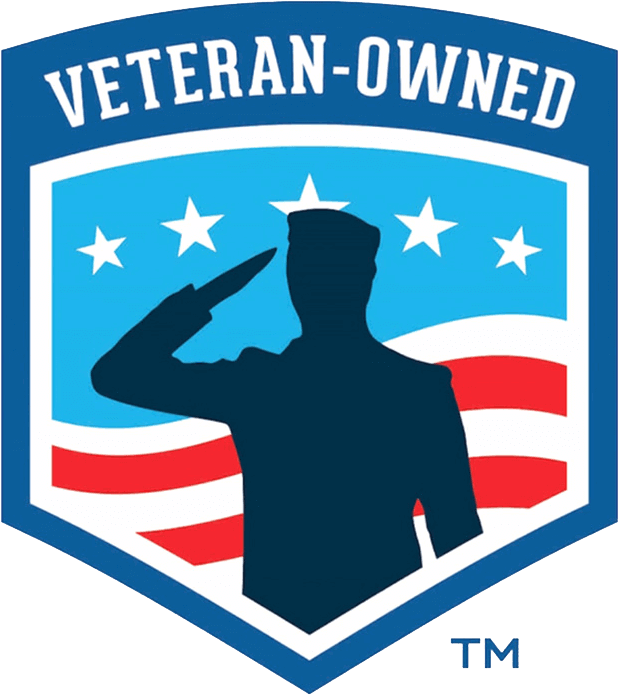You’re probably wondering how many different kinds of trucks are there, and just to give you an idea, the answer is – a lot!
But that’s not the only concern when it comes to picking a truck; it’s choosing which kind of trailers would be best for your business.
It might be challenging to determine which trailer is appropriate for your freight given the wide variety of trailers now on the road and their respective purposes.
In this article, we will talk about the most common trailers used in American transportation and their main functions.
This will give you a better idea of which kind of trailer best suits your requirements.
In the trucking industry, the following types of trailers are most frequently used to convey freight:
Conestoga Trailers
Conestoga trailers are a particular kind of trailer created as an additional choice for freight that has to be protected from the weather while in transportation.
Conestoga trailers are an excellent option for many open-deck trailers because they typically measure 53 feet long and are available in step-deck, double-drop, and flatbed versions.
Conestogas are utilized in a variety of industries, but the aerospace and energy sectors use them the most frequently because they are best suited for carrying sensitive goods that could be harmed by tarping.
Curtainside Trailers
Just like Conestoga trailers, curtainside trailers have integrated tarp systems, which is how they are comparable to one another. The top, rear, and front of cutrainsides are solid, and there are hanging tarps on each side. As a result, only the back or sides, not the top, can be used to load these trailers (unlike a Conestoga).
When transporting cargo that needs to be protected from the weather, curtainsides are a great choice since their tarps create a seamless barrier that prevents the cargo from coming into contact with wind, rain, dirt, and debris.
Double Drop/Lowboy Trailers
The double drop trailer, sometimes referred to as a lowboy, low bed, or float trailer, is the type of trailer that is closest to the ground. Due to two drops that occur respectively before the back wheels and behind the gooseneck, they are close to the ground. Therefore, double-drop trucks may transport towering pieces of equipment.
Double drop trailers are more than sufficient for heavy hauls, with a weight limit ranging from 40,000 to 80,000 pounds (depending on the number of axles). Note that due to the design of these trailers, the maximum load length is only as long as the well-space, which is normally 29 feet long.
Before being deemed over-dimensional, any freight transported by a double drop trailer cannot exceed the legal maximum height of 11 feet, 6 inches. They are the ideal choice for any business moving huge equipment thanks to their advanced height capacity. These include heavy industrial and agricultural equipment that needs to be transported to and from a job site.
Drop-Deck/Step-Deck Trailers
When a load’s height is a concern, drop-deck or step-deck trailers are sometimes employed instead of flatbed trailers. The drop-deck trailer is a popular mode of transportation because of its simplicity and increased height capacity over flatbeds.
Drop deck trailers, which consist of an upper deck and a rear component that is low to the ground, may tow cargo that is up to 10 feet, 2 inches tall before they are deemed over-dimensional.
Dry Van Trailers
Dry van trailers are usually preferred when transporting boxed, palletized, or loose goods. The dry van trailer, which typically measures 53 feet, is the most prevalent kind of trailer on the roadways today.
Dry van trailers are used to transport everyday things and utilized by some of the biggest firms in the world to move their stock, including Walmart, Target, and Procter & Gamble.
It’s also frequently utilized to move supplies of non-perishable food, household goods, and apparel.
These trailers are the ideal piece of equipment for any shipper or receiver operating from a loading dock due to their box-like design and capacity to back directly into a bay.
These trucks are distinguished by the enclosed container they employ to keep things secure. Their maximum weight capacity is between 42,000 and 45,000 pounds. Note that these trailers are not appropriate for transporting huge loads due to the enclosed nature of the cargo within and the difficulty of their floors to withstand a lot of weight (unlike a flatbed).
So, if you want your business to increase the size of its fleet, you might want to invest in dry van trailers as these are both flexible and affordable.

Extendable Drop-Deck Trailers
Long freight is transported using these trailers. To do this, these trailers’ middle section may be modified from its initial length of 38 feet to a maximum length of 65 feet. This makes them ideal for transporting any freight that is longer than the allowed maximum length of conventionally sized trailers.
Similar to the typical drop deck trailer, these trailers can support a maximum permissible height of 10 feet and have a maximum weight capacity of 43,000 pounds. These trailers are very helpful in the correct circumstances and are frequently used to move huge machines and extra-long raw materials.
Extendable RGN Trailers
The extended RGN is a solution where well-space is a problem. The expanding RGN is made for extra-long freight, much like the expandable double drop trailer.
These specialty trailers include a well that can be extended up to 50 feet in length, giving them plenty of capacity to move heavy equipment, supplies, and oversized freight.
The weight capacity of these trailers can be significant, depending on how many axles are employed. These extendable RGN trailers have a maximum weight capacity of 42,000 pounds (3 axles) to 225,000 pounds (19 total axles).
Hotshot Trailers
Carriers all across the world are using these trailers more and more frequently. Hot shot trailers are low-lying flatbed trailers that can be drawn by pickup vehicles that fall into the classes of 3-6. Because they can be pulled by a specialized pickup vehicle, hot shot trailers allow carriers to save the expense of purchasing a regular semi-tractor. By doing this, many of the entry hurdles to the trucking sector are eliminated.
Hot shot trailers offer a much more affordable alternative to the standard semi-truck flatbed trailer for transporting freight, especially over short distances. These hotshot trailers have been used to great success by businesses that specialize in shorter hauls.
The majority of hot shot trailers on the market are between 3 feet, 4 inches, and 3 feet, 6 inches in height and range in length from 30 to 40 feet. The total weight that these trailers can transport is reduced because they are so much smaller than the carriers’ other options. Only 16,500 pounds of freight can be transported with a 40-foot hot shot trailer.
Refrigerated Trailers (Reefers)
The purpose of refrigerated trailers, often known as reefers, is to transport any cargo that needs temperature control. They are the only kind of trailers with insulated walls and temperature control that can safely transport perishable goods. These trailers are frequently used to transport goods including fruit, medications, and ice cream.
A maximum weight limit that is comparable to dry vans is offered by refrigerator trailers (42,000-45,000 pounds).
It should be noted that a reefer can haul objects up to a maximum height of 8 feet and a maximum width of 8 feet, 2 inches because of its insulated walls. Similar to the dry van, reefers are unable to transport any cargo longer than their deck.
Removable Gooseneck Trailers (RGN)
The RGN family is another typical category of trailers. There are several uses for these trailers, which come in different sizes, just like there are for conventional trailers. RGNs are unquestionably worth taking into account in a market where shippers have several options to pick from.
These trailers have a removable gooseneck at the front, as the name implies, which is used to attach the trailer to the tractor. The driver then lowers the front of the trailer to the ground. RGN trailers are the ideal vehicle for moving huge machinery from point A to point B since they may be used as a ramp to load and unload machinery.
Removable gooseneck trailers exist in a variety of sizes, just like conventional trailers.
RGN Trailers
Known for being the most widely used member of the RGN family, the RGN can have two or three wheels, depending on the amount of capacity required.
RGNs make it simple for transporters to move bulky industrial equipment.
Before leaving, simply load your equipment onto the trailer, secure it, and then drive off once you have arrived at your location. Cranes and forklifts are no longer required for the loading and unloading operation.
A number of the applications for these RGNs are similar to those for double-drop trailers. As a result, they are subject to the same height and weight limitations as their double-drop equivalents.
The quantity of well-space required determines whether these trailers are employed, much like the double-drop trailer. The area offered by the wells of these trailers is insufficient for loads longer than 30 feet.
Standard Flatbed Trailers
Like dry vans, the conventional flatbed trailer is a popular kind of truck used by most businesses. Although flatbed trailers exist in a variety of sizes (including 24, 40, 45, 48, and 53 feet), the 48-foot model is the most popular.
These trailers prioritize versatility. The flatbed’s open back and sides make for simple forklift or overhead crane loading and unloading. It is frequently used to move steel, construction equipment, lumber, and other open-air goods.
Any freight transported using these trailers cannot exceed their maximum height and breadth of 8 feet, 6 inches. A maximum of 48,000 pounds can be transported on the flatbed trailer, which is 5 feet off the ground.
As long as the required authorizations are obtained and the correct routes are taken, big freight can be transported using a regular flatbed trailer because it doesn’t have a container to hold its contents (unlike a dry van).
Freight must be adequately secured utilizing chains, straps, and various tarping options while using normal flatbed trailers and any other type of trailer.
What Kind of Trailer Is Best For Your Freight?
Now that you know that there are many trailer kinds available in the market as well as their specific use and features, you can logically compare these choices and decide which would best suit the requirements of your freight.
For instance, a reefer trailer is the best choice if you need to deliver perishable food and drink goods. Consider a dry van if your goods are on pallets.
The key is to keep capacity, budget, and haul length in mind when making this choice.
Want to learn more about trucks or how to earn from them? Just send us a message or leave a comment below!



